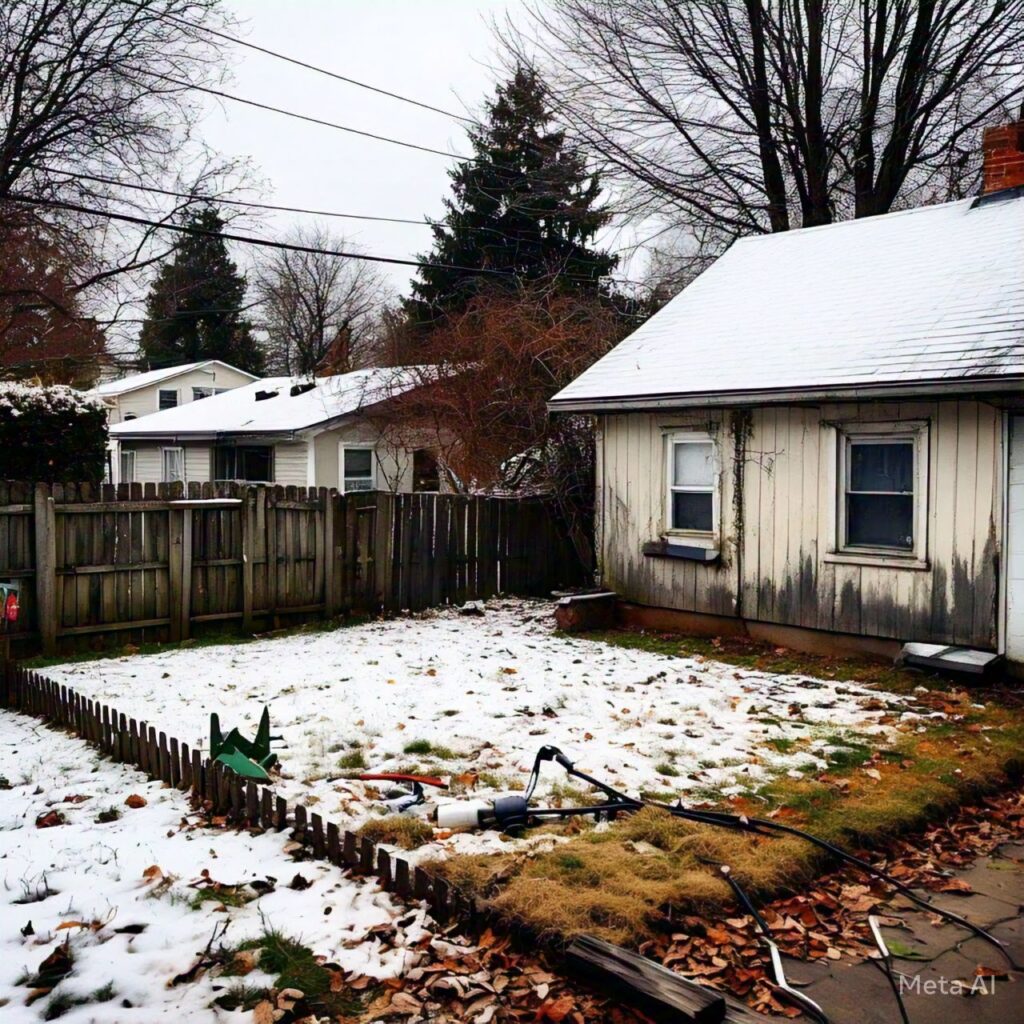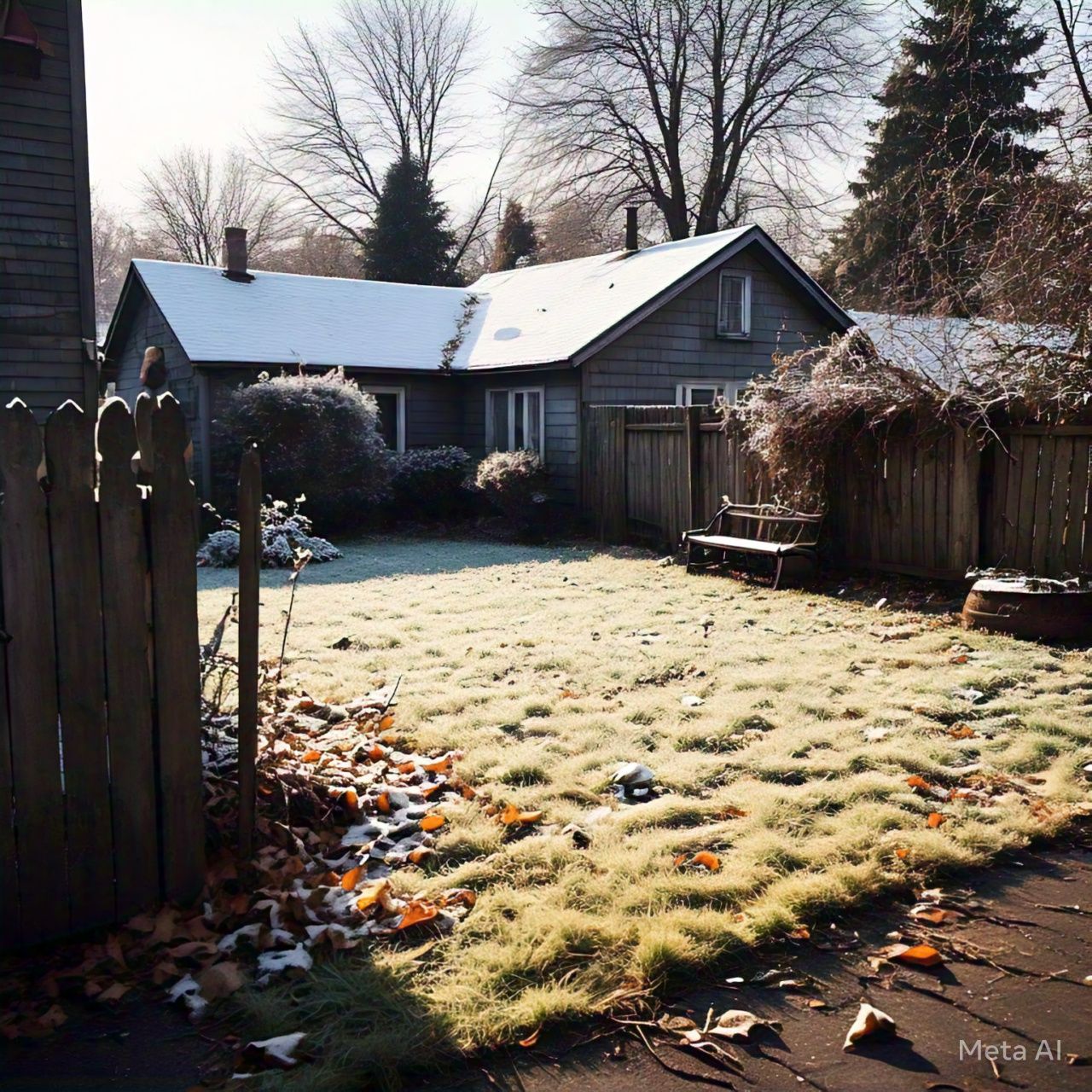You might be surprised to learn that winter can play a cruel game of freeze tag with your lawn. “It” is your grass. How can you fix winter damage to your lawn after the cold?
Identifying the trouble regions, such as bald spots, yellow or brown grass, and indications of pest damage, will help your lawn recover more quickly. To fix it, rake to increase air circulation, remove any dead grass or trash, plant seeds in the exposed spots, and don’t forget to water well. If necessary, aerate to lessen compaction.
We’ll go over how to fix winter damage in this post:
Step 1: Schedule your lawn care.
Step 2: Evaluate the harm
Step 3: Determine the reason for the winter damage
Step 4: Use a rake to clear the area.
Step 5: Examine the dirt
Step 6: If necessary, aerate the soil
Step 7: If necessary, reseed or sod the lawn.
Step 8: Use fertilizer
Step 9: Give it enough water and wait to mow.
FAQ on fixing winter damage
Step 1: Schedule your lawn care
You must time your lawn restoration efforts properly if you want to ensure that they are not in vain.
“Soil and air temperatures are the gatekeepers for turfgrass growth,” the USGA Green Section Record notes. Recovery attempts won’t be successful if they start before temperatures are warm enough.
Waiting until the air and ground are sufficiently warm is crucial. Aim for soil temperatures between 50 and 56 degrees Fahrenheit and air temperatures between 57 and 75 degrees to give your grass the best chance of recovering.
Pro Tip: During the first warm days of spring, let your lawn dry up a little. Allowing “lawns to start to go under mild drought stress actually increases rooting,” according to the University of Illinois Extension Horticulture. When tracks remain after walking on your grass, it’s time to begin repairs.
Step 2: Evaluate the harm

It’s time to evaluate the damage once it becomes warm enough. Just take a leisurely stroll around your yard and observe everything carefully. Any dry areas where grass should grow but isn’t should be closely monitored.
Certain parts of your home lawn are frequently more susceptible to winter damage than others.
These frequently impacted places consist of:
- Low areas where water builds up and causes ice to form.
- High foot traffic on certain lawn patches stresses the grass.
- places close to driveways and sidewalks that are subjected to deicing salts.
- areas with turfgrasses prone to disease or uneven nitrogen levels.
- particularly in areas with shade, where temperatures stay cool for longer.
Warning signs of winter damage include:
- Patches that are thinner: Winter stress may be indicated by sparse dots.
- Color shifts: Brown or yellow grass is a blatant sign of trouble.
- Disease indicators: Fungal illnesses are indicated by round, discolored, or fuzzy patches.
- Evidence of pests: Keep an eye out for tunnels, mounds, or plants that have been chewed.
*Note: Winterkill, which indicates that certain parts of your lawn did not withstand the cold season, is typically indicated by dark or yellowish patches.
Pro Tip: Just try gently pulling at the grass if you’re not sure about a particular spot. It indicates dead grass that needs to be replaced if it pulls out readily with loose roots.
Step 3: Determine the reason for the winter damage

What you need to do next depends depend on the kind of damage your grass has sustained. It could be a fungal issue or a vole infestation on your grass.
Occasionally, your lawn may just be unable to withstand the severe cold wind and freezing temperatures, leading to “winterkill,” or widespread grass death.Note: Your lawn may only require minimal cleaning and fertilization to return to excellent condition if you prepared appropriately in the fall and experienced a milder winter.
Repairs may require a specialized strategy, depending on the problem. The following are some primary causes and characteristics:
Snow mold

Once the snow melts, a fungus called snow mold causes round, flat, discolored patches in your lawn.
Repairing snow mold: As the weather warms, snow mold frequently recovers. Simply rake lightly to allow for air and sunlight, or reseed if necessary. *Note: If you’ve seen that snow mold is a persistent problem, preventive treatments in the fall may also be beneficial.
These are our comprehensive guides:
- How can one define pink snow mold?
- “Treating Lawn Fungi.”
- “How Can Gray Snow Mold Be Removed and What Is It?”
Accumulation of thatch

On top of the soil surface, thatch—a layer of dead grass, roots, and debris—can accumulate. Water, air, and nutrients cannot reach the grassroots when it becomes excessively thick (more than half an inch).
Solution for thatch buildup: Rake out any light thatch if there is any. Use a thatch rake or hire a dethatcher for more substantial buildup. (See our comprehensive “How to Dethatch Your Lawn” instruction.)
Hydration of the crown

When grass absorbs too much water just before a freeze, ice forms inside the plant, which can harm or even kill it. This is a fancy word for the situation.
Damage from crown watering typically manifests as asymmetrical spots of wilted or discolored grass throughout your lawn.
Solution for crown hydration: Regretfully, those areas will require resodding or reseeding after this type of damage is done.
Wintertime desiccation

When dry winds blow across lawns in cold weather without a coating of snow to protect them, winter desiccation occurs. While the grass’s moisture evaporates, the frozen soil stops it from receiving additional moisture. The grass is harmed or killed as a result.
With occasional spots of green grass, the lawns are primarily brown.
Repairing winter desiccation damage to your lawn usually entails raking dead grass, reseeding, or resodding the affected areas.
Sheets of ice

Your grass may die if ice sheets accumulate on your yard for long periods of time. Keep in mind that the damage to your lawn may differ based on the kind of grass and the duration of the freezing conditions. If the crown is still alive, some grass may regrow on its own.
Repairing ice sheets: There’s not much you can do when it’s freezing. Once it’s warm, replace the sod or reseed the area and rake off any dead grass.
Voles: When the snow melts, these unattractive tracks crisscross your lawn because these tiny rodents build a network of surface runways.
Repairing vole damage involves reseeding damaged areas, filling paths with topsoil, and scraping off dead grass.
Pro Tip: To stop infestations in the future, think about putting up barriers or using repellents. (Read more about how to get rid of voles in your yard in our article.)
Damage from salt

Road salt can damage your lawn in the winter. It causes the grass to change from green to brown or yellow, especially close to drives and sidewalks. Why? It’s easy: The turf’s roots become dehydrated and eventually die as a result of the salt removing moisture from them. Furthermore, it alters the soil’s composition, which hinders grass’s ability to absorb nutrients.
Repairing salt damage: Use gypsum to aid in the salt’s neutralization. After that, rinse the impacted regions with water to lessen the concentration of salt.
Step 4: Use a rake to clear the area

Always rake any dead grass, sticks, leaves, or other debris out of the path, regardless of who caused the damage to your winter lawn. This makes it easier for fresh grass to grow.
Just use caution when raking to avoid removing any good grass that could be beginning to grow. Since leaf rakes are typically lighter and easier to handle than larger rakes, they can be a good tool for this activity.
See our post “The 6 Best Leaf Rakes for The Lawn and Garden” if your old rake doesn’t seem up to the job.
Step 5: Examine the dirt

It’s time to examine the soil after removing the garbage and old, dead grass. A straightforward technique for determining your soil’s pH and nutrient levels is soil testing. Understanding these numbers enables you to determine what your lawn may require.
Pro tip: Keep in mind that a balanced pH enhances your grass’s nutrient availability, encouraging robust growth and recovery from winter damage. For the majority of grass species, a healthy soil pH level should be between 6.0 and 7.5 to allow for the best possible nutrient absorption.
A soil testing kit is readily available online, at your neighborhood garden store, or at the cooperative extension office in your area.
Step 6: If necessary, aerate the soil

Your soil may become hard from the bitter cold, preventing water and air from reaching the ground level. To release this compacted soil, aerating creates tiny pores in the earth.
However, how can you determine when aeration is necessary? It’s easy: try driving a screwdriver into the ground. You should aerate if it’s difficult.
For compacted areas or smaller lawns, a handheld aerator tool can be used. Consider hiring an aerating equipment from your neighborhood store for larger regions or hard soils.
*Note: You have the option of using spike or core aeration for aeration. By lowering compaction, core aeration eliminates soil plugs and enhances soil health generally. On the other hand, spike aeration only creates holes in the earth; it works well for light compaction but is not as efficient as core aeration.
Step 7: If necessary, reseed or sod the lawn

It’s time to plant seeds that are appropriate for your lawn and climate if your grass is suffering from bare spots caused by winterkill, voles, or ice sheets. If you don’t plant grass seed initially, weeds and crabgrass will take over any exposed area.
Spread seeds uniformly over the exposed areas and softly rake with a hard-tooth rake to reseed. Till they sprout, don’t forget to water them frequently.
Try installing sod if your grass sustained significant damage during the harsh winter months. Although it takes less time than seeding, it requires continuous watering to aid in the establishment of the roots.
Step 8: Use fertilizer

Apply starter fertilizer to the exposed sections after you’ve seeded or placed sod. Depending on the results of your soil test, select an appropriate mix for your current grass that just needs a spring nutrition boost.
Pro Tip: Chris Enroth, horticulture instructor at the University of Illinois Extension, advises applying a thin layer (about an inch) of compost over your whole lawn in place of conventional fertilizers. To make sure the grass seed achieves good soil contact and to mix the compost into the turf, I will scatter the compost and then run a leaf rake over the lawn.
Step 9: Give it enough water and wait to mow

The straightforward part is about to begin. Don’t forget to water fresh grass seed sparingly for five to ten minutes, two to four times a day, till it germinates. Depending on the soil type and weather, aim for one-eighth to one-quarter inches of water every day and make adjustments as necessary.
Continue watering until you see fresh grass growing, and then switch to a regular watering plan. (See our comprehensive advice on “Guidelines for Watering Grass Seed.”)
Wait until the young grass is about 3 inches long before cutting it to allow the roots to take hold. (This is our “How Long After Overseeding Can I Mow?” instruction.)
Frequently asked questions regarding fixing winter damage
How can winterkill be avoided?
Careful winterizing and year-round attention are necessary to prevent winterkill problems. Among the best practices are:
Avoid the grass: In order to prevent harming dormant grass, reduce foot traffic throughout the winter.
Enhance drainage to stop water from accumulating and freezing in low areas.
Use the appropriate disease treatments: To help prevent snow mold, properly apply high-quality winter disease protection, such as fungicides.
Make your turf stronger: During the colder months, a winter fertilizer application keeps the grass healthy. (You may read our whole post on “When Should You Apply Winter Fertilizer?” here.)
Select grass that can withstand salt: Choosing these resistant types will help prevent winter damage and preserve a healthier lawn all year round in places like Rhode Island that are subject to harsh coastal regions or road salt.
Is it possible to make brown grass green again?
Yes, with the right care, brown grass may turn green. Recuperation may require water, nutrients, or simply time. It’s likely that the lovely green tone will return if the roots are still alive. (See our post on “How to Remove Brown Spots from Your Lawn.”)
When grass dies, can it regrow?
No. Your grass is dying if the grassroots are dead. For new and robust growth in this situation, you’ll need to reseed or lay new sod.

